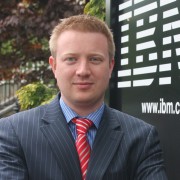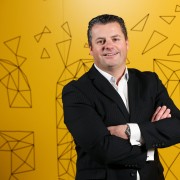Up, up and away
Data centre business is on an upward trajectory. According to 451 Research, the market value for hosting services in Ireland will approach €175 million in 2016, representing a CAGR of 18 per cent. This growth, it predicts, will outpace the UK, Benelux, the Nordics and Iceland.
And the forecast for infrastructure as a service (IaaS) is equally positive with revenues of €51 million and CAGR of 50 per cent predicted to 2016.
Who and what is driving this exceptional growth?
“When it comes to looking at cloud, it very much depends on the organisation, its level of maturity and its core applications,” according to Davin Cody, converged infrastructure specialist with HP.
“There are certain things that are easy to go to cloud with; for example an off-the-shelf software package, like email, SQL or SharePoint. It’s more difficult for other organisations, who’ve spent time developing their own application. They are going to have to reinvest that development time to get it back to the specification they want from the external provider.”
Public cloud, private cloud and hybrid. The picture is one of confusion among some organisations according to Mark Fagan, head of data centres with BT Ireland.
“Companies are familiar with the terms but there is a lack of clarity as to how they apply to them – all, some or none. What they want is someone to sit with them and explain what this means to their business and what’s appropriate for them.
“Some of our more complex solutions are with what you regard as indigenous SME but their business is online. They wouldn’t have a large footprint in terms of server count, but what’s going on is extremely complex. Our financial muscle allows for opex-based rather than capex-based infrastructure solutions which is very attractive,” he said.
Cloud is the single biggest growth area, according to Brian Larkin, Digital Planet operations director with HiberniaEvros. “Outsourcing strategies are being wrapped up in datacentre deployments where larger clients are moving to the datacentre, while also looking for that infrastructure to be managed by a third party,” he said.
Eddie Lyons, CEO with Servecentric has seen a change in how outsourcing is perceived by SMEs.
“Stable bandwidth with higher capacity and lower costs have changed the way many clients look at outsourcing. We have seen a phased move, particularly in relation to disaster recovery and business continuity. It is quite feasible now for an SME to have their primary instance hosted in a data centre, and a secondary instance on-site, where staff can connect to either site securely and from a choice of origins,” he said.
Development and test is perhaps a less obvious area of data centre activity but it’s one that’s appearing with growing frequency on HP’s radar.
“Test and development requires a lot of resource and time but it doesn’t actually drive any business benefit,” explained Cody. “It may be as big as the production environment but may not carry any of the normal sensitivities around data as it doesn’t have the live database assigned to it. Putting this environment in the cloud and being able to quantify the cost is a big benefit,” he said.
Geoffrey McGowan, head of pre-sales with Comsys sees growth in customers purchasing shared storage solutions for virtualisation.
“Most SME’s have being sweating their current assets since the beginning of the ‘credit crunch’ and now with the improving financial outlook we are seeing them refresh their infrastructure. When these customers look to make this investment, we are seeing a complete move from physical to virtual environments, as well as a move from local to shared disk architecture,” he said.






Leave a Reply
Want to join the discussion?Feel free to contribute!